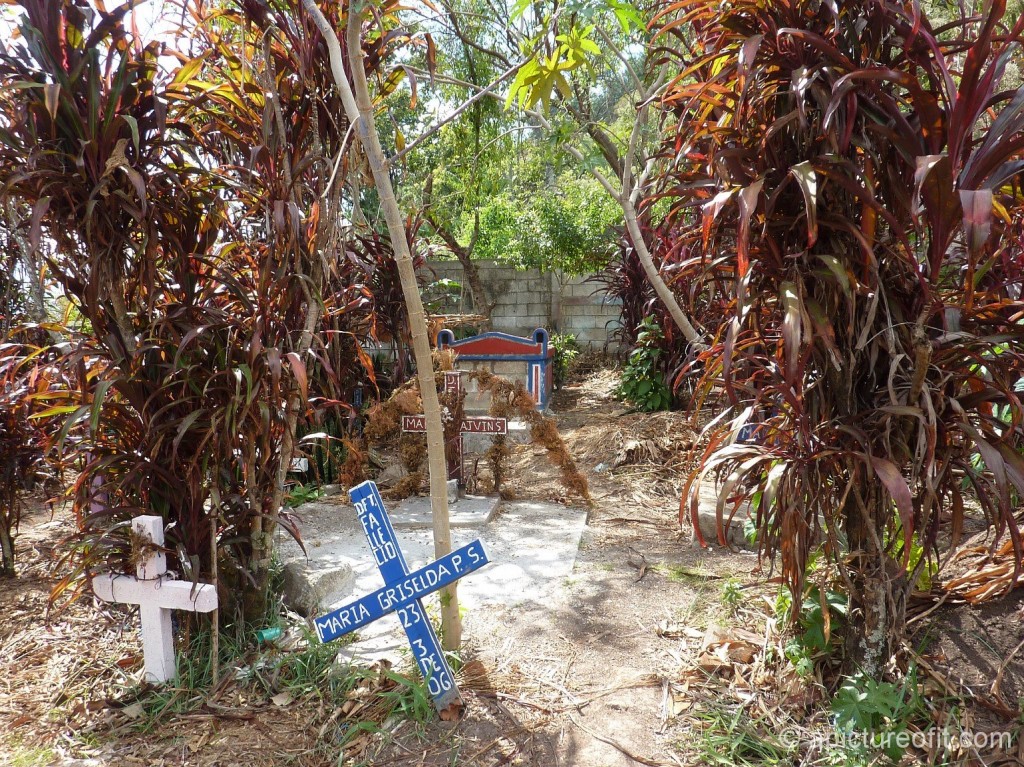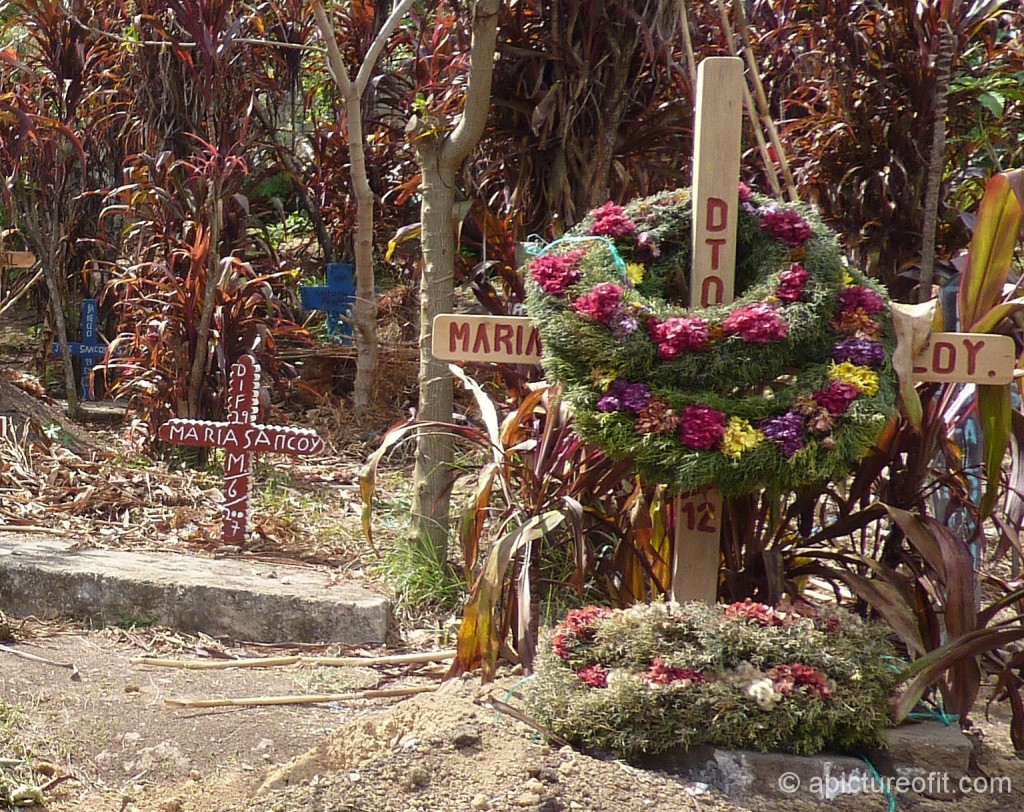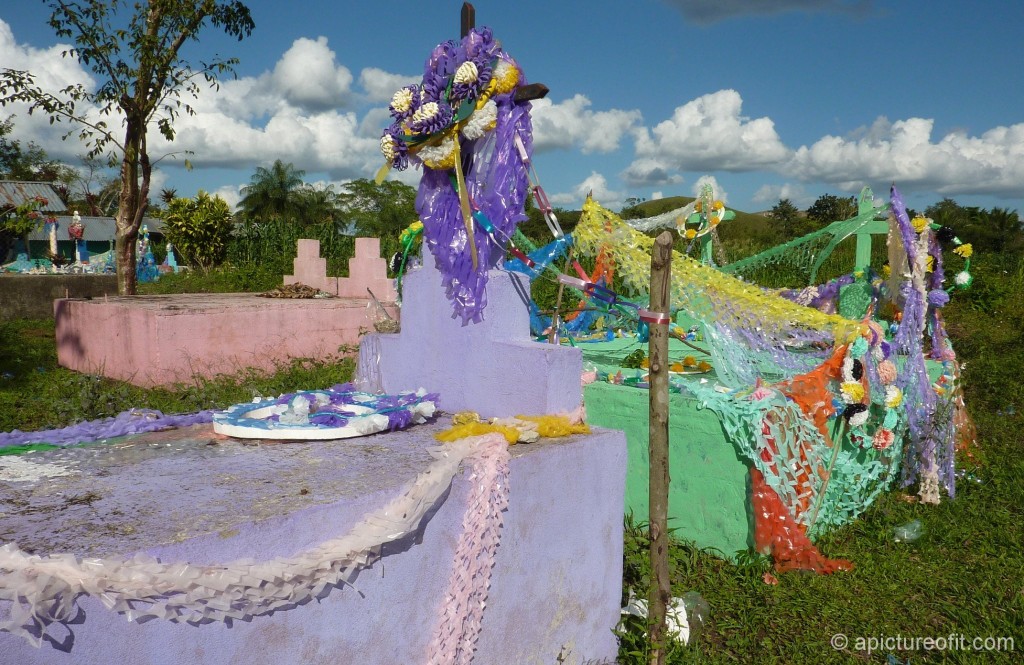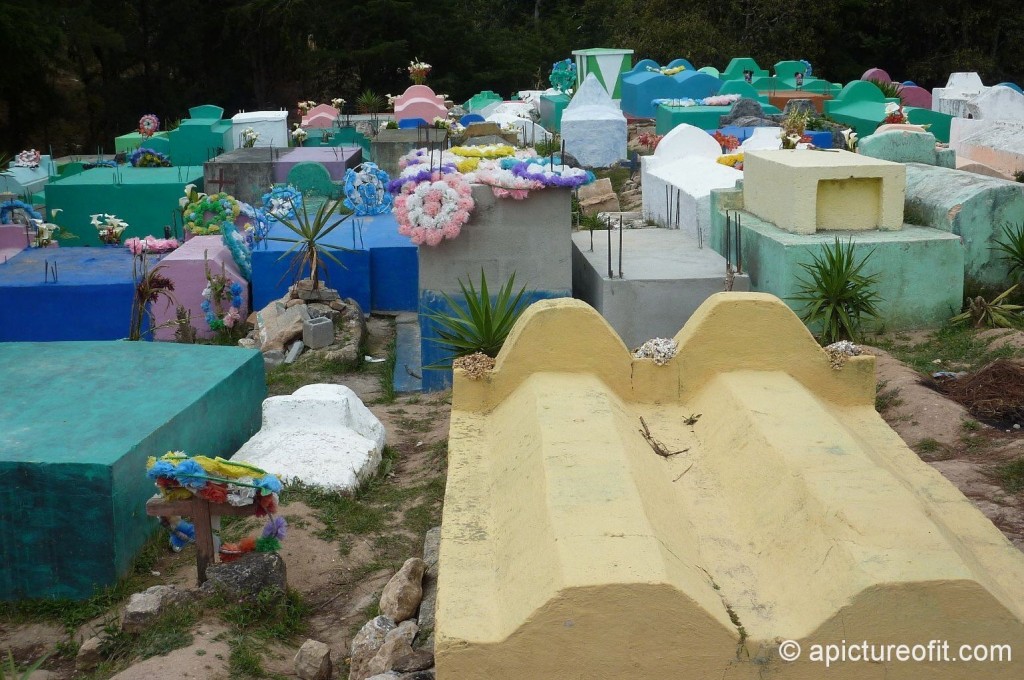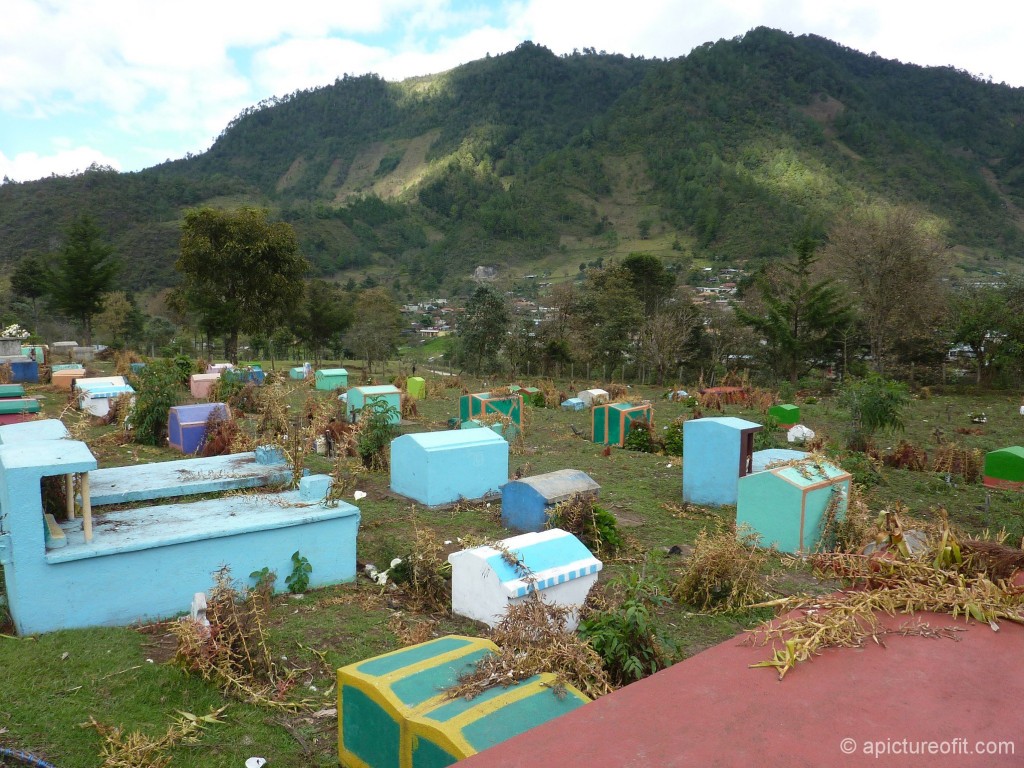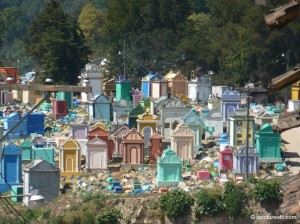I have always had a bit of a fascination for cemeteries because they hold intriguing clues to the culture and history of an area. And perhaps I just enjoy walking with ghosts.
In the first segment on the fascinating, varied, and often wildly colorful cemeteries of Guatemala, we visited some of the cemeteries in the Antigua area ranging from the relative formality of Antigua‘s Cementerio General, to the more typical mixture of formal and humble found in Ciudad Vieja. High up on the slopes of Volcan de Agua we also explored around Santa Maria de Jesus, a village of about 15,000 Kaqchikel Maya, and finally we wandered through a very tiny indigenous cemetery high to the east above Antigua.
As one continues on from this somewhat more sedate portion of Guatemala, the color and variety found in the cemeteries explodes. This segment will look at the cemetery at San Marcos La Laguna above Lake Atitlan, along the roadside in the Peten and then will drop into some smaller villages in the department of Quiché.
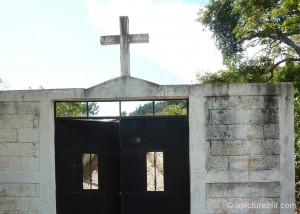 At Lake Atitlan, there are several different Maya languages spoken, each reflecting the varying heritages of the people. Tz’utujil is the most often encountered and is the language, the tribal heritage and the culture in San Marcos La Laguna. As I explored up the hillsides, away from the tourist zone and into the indigenous residential area, I encountered this entrance.
At Lake Atitlan, there are several different Maya languages spoken, each reflecting the varying heritages of the people. Tz’utujil is the most often encountered and is the language, the tribal heritage and the culture in San Marcos La Laguna. As I explored up the hillsides, away from the tourist zone and into the indigenous residential area, I encountered this entrance.
And inside these iron gates I found a most humble and interesting garden cemetery
 Most of the grave markers were simple wooden crosses though there were occasional cement markers and a few small cement tombs. The plants far out numbered and overshadowed other occupants in this humble cemetery.
Most of the grave markers were simple wooden crosses though there were occasional cement markers and a few small cement tombs. The plants far out numbered and overshadowed other occupants in this humble cemetery.
Fresh flowers mark a very recent burial site
Moving now from a small village on the shores of Lake Atitlan to the north of the country, for a look at another very small cemetery. This one lay alongside the main road between Flores and Rio Dulce. This area is agricultural and sparsely populated.
Here all the tombs appear to be simple but substantial, and all are brightly painted. Many also bear plastic decorations and wreaths. Black stains suggest flames of some sort, perhaps during Dia del Muertos celebrations.
And now on to the center of the country, to the Department of Quiché. Starting in the north in Uspantán, population 2800. Though the village has a very small population, the cemetery reflects a very stable, long established community.
Though not fancy architecturally, there are many large tombs, colorfully painted.
In this area, near the main entrance, the mausoleums are quite substantial and very well maintained. The presence of so many fresh flowers in the middle of the week was especially striking. In many Guatemalan cemeteries I saw families visiting the tombs, and keeping them fresh and cared for. I visited here in the afternoon. Had I come in the morning, I likely would have seen the same thing here.
And at the fringes are more simple memorials with traditional decorations.
In Uspantán color truly explodes in the cemetery.
To see more of the cemeteries of rural Quiché, see the posts from the Ixil triangle region: from Chajul and Acul
A look at Acul
And at Chajul
The final post on the cemeteries of Guatemala will visit two special towns in the Department of Quiché. Chichicastenango is well known for both its market and its cemetery.
Santa Cruz del Quiché (known simply as Quiché), though only 20 kilometers away, is quite a different sort of place – where Chichicastenango has become a tourist mecca, Quiché retains a more local character. Guess which one I preferred?


